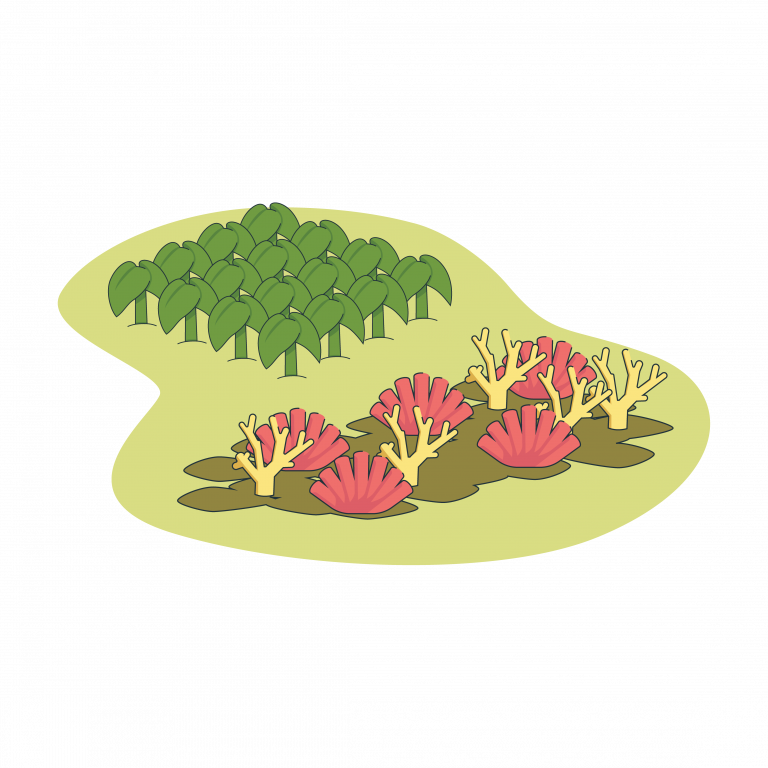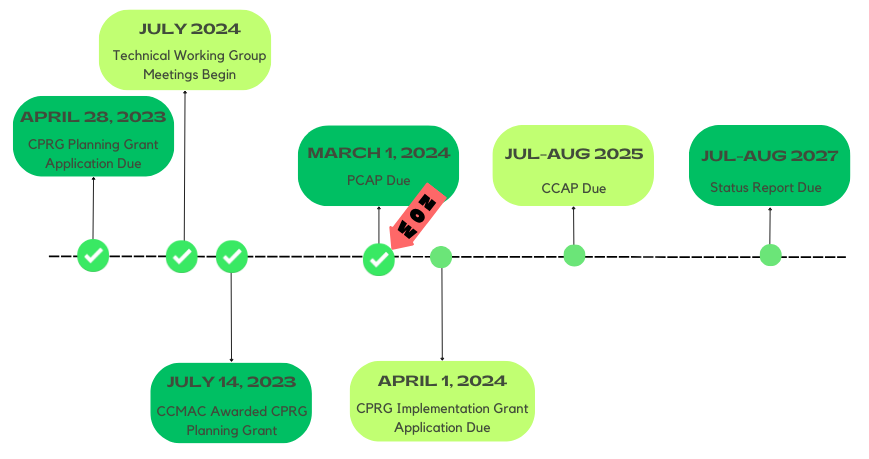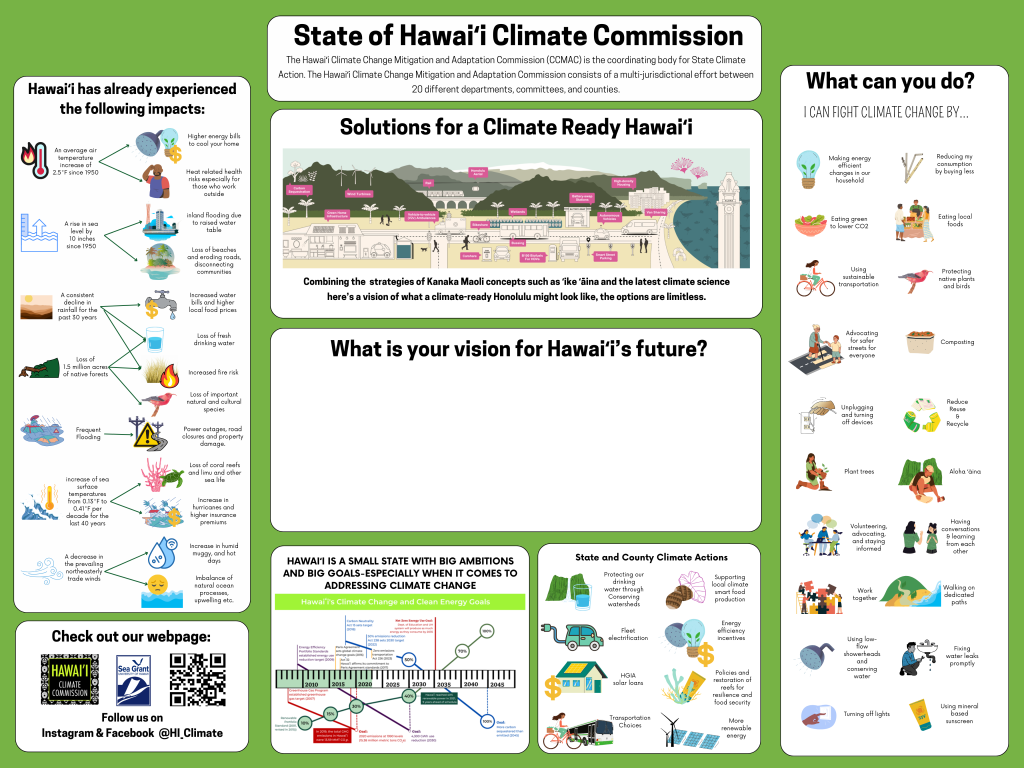- Home
- Critical Decade
- HI Climate Action
- HI Commission
- HI Resources
- HI Equity
- HI Events
HI Mitigation
The State is DevEloping Two Major Climate Action Plans for Climate Mitigation in Hawaiʻi
A roadmap prioritizing and coordinating projects to be ready to apply for the $4.6 billion available nationwide for climate action implementation.
Climate Action PATHWAY (CAP)
A community focused detailed action plan identifying steps needed to create a clean, equitable, and resilient climate ready Hawaiʻi

Funding for these plans comes from the US Environmental Protection Agency (EPA). Funds are geared towards supporting investment-ready programs, projects, technologies, and other solutions to reduce emissions in the near term and help the entire country transition to an equitable clean energy economy.
The State Climate Commission is the lead on this project and will be focused on inclusivity of all interested and affected stakeholders in the process of plan development and fund disbursement. This will involve gathering input from key stakeholders and communities and transparent communication. This includes community meetings, regular digital and offline updates, and producing an accessible, one-stop hub for information for both the grant and State Climate Plans.
These plans are being developed in conjunction with the Hawaiʻi State Energy Office’s State Decarbonization Strategy. Plans will center on both greenhouse gas reduction (including a GHG inventory, projections, reduction targets, and measurement) and community benefits (including workforce development and benefits specifically to low income and disadvantaged community).

Timeline

PRIORITY CLIMATE ACTION PLAN (PCAP)
The climate crisis has already cost Hawai‘i lives, a price much higher and more devastating than even the most pessimistic predicted. Hawai‘i now has a clearer understanding of the need for urgent action. This Priority Climate Action Plan (PCAP) outlines seventeen (17) actions across islands and sectors to reduce future climate impacts. To create the PCAP, the Hawai‘i Climate Change Mitigation and Adaptation Commission (CCMAC) partnered with the Hawai‘i State Energy Office (HSEO), the Hawai‘i Department of Land and Natural Resources (DLNR), all four Hawai‘i counties, and competitively selected community partners to identify immediate actions that can be taken to reduce greenhouse gases (GHG) and air pollution, create high-quality jobs, spur economic growth, and enhance the quality of life for all who live, work, and play in Hawai‘i.
The PCAP outlines Hawai‘i’s priority measures to reduce GHG emissions and achieve climate change goals in a manner that is clean, equitable, and resilient. The seventeen (17) priority measures detailed in the PCAP address GHG reductions from 2025 through 2050. These priority measures complement Hawai‘i’s existing climate policies and initiatives that mitigate emissions and were chosen based on their GHG reduction potential, high degree of implementation readiness, cost-effectiveness, and the additional community benefits they provide.
CLIMATE ACTION PATHWAY (CAP)

The State of Hawaiʻi’s Climate Action Pathway (CAP) will build upon the State PCAP, and identify all major sources and sinks of GHGs, establish short and long term reduction goals, and fitting strategies and measures. The CAP will examine current GHG emissions, and projected emissions without any changes to status quo activities, and compare these to projected emissions with economy-wide GHG reduction activities fully carried out.
The CAP will be developed using the relationships and networks created during the PCAP planning phase. Community engagement will be particularly focused on ensuring disadvantaged and marginalized communities are included in planning, and that the planning process is accessible. Engagement will also build a broad coalition of local organizations and leaders to ensure all of our communities are represented in the engagement and planning process.
We want your input to guide Hawaiʻi’s future Climate Action Pathways (CAP)! Our CAP will be submitted in 2025. The entire state of Hawaiʻi is welcome and encouraged to give input towards this next very important step in Hawaiʻi’s climate future. Please take a few minutes and give us your feedback about what you think should be in Hawaiʻi’s Climate Action Pathway. Mahalo for being a part of Hawaiʻi’s future!
Mitigation Strategies
The State of Hawaiʻi will build on existing State and County climate mitigation strategies in creating and implementing its PCAP and CAP. These strategies will combine Kanaka Maoli concepts such as ʻike ʻāina and the latest climate science. Potential mitigation strategies to reduce the Stateʻs contribution to climate change are detailed below.
Designing communities where you can get from home to work, school, the market, or other daily necessities by walking or rolling. In addition to improving public health, this reduces vehicle pollution, conserves natural resources and lowers infrastructure costs.
Planning transportation networks where people can access necessities without needing a car through walking, biking, or riding public transportation. The transportation sector accounts for 57% of Hawaiʻi’s energy use, and the production and importation of vehicles and road infrastructure produces even more emissions.
Hawaiʻi’s native forests, wetlands, grasslands, coasts, and oceans play an important role in sequestering carbon, preventing erosion, maintaining biodiversity, and broader ecosystem health. Encroachment by humans and invasive species threaten flora and fauna many of which are found nowhere else in the world.
Electric vehicles help reduce overall consumption of petroleum-based fuel by not using gasoline, particularly when the electric grid used to charge them uses renewable resources. Hawaiʻi has set a goal of 100% electric sales of all medium and heavy duty vehicles.
Renewable energy sources are constantly replenished by the earth, and green energy emits low amounts of carbon emissions. Hawaiʻi has set a goal of 100% of electricity being generated by green renewable sources by 2050; as of 2022 about a third of our electricity is from green renewable energy, the most common of which is solar.
A circular economy changes the way that resources are extracted, used, and disposed to minimize negative externalities (like pollution) and waste through processes such as designing for long-term use, recycling, and waste-management. The ahupuaʻa system shares many aspects with circular economics, and also shares a view of the economy as an ecosystem rather than a tool to maximize production.
Nature based solutions apply processes found in nature to the built/”man-made” environment to promote climate resiliency and promote other environmental and economic benefits. Examples include growing native coastal plants along shorelines to protect coastal property and reduce beach erosion.
Energy efficiency refers to maximizing energy output relative to input, meaning less energy is needed to get the same amount of work done. Hawai‘i has set a goal of reducing electricity consumption by 4,300 Gwh by 2030 through measures such as building retrofits, construction policies, energy saving technologies, and energy saving practices.
Regenerative agriculture uses food production practices that promote soil and environmental health through growing context-specific crops, improving soil health, and reducing the need for high-emission industrial fertilizer inputs. Regenerative agriculture is a core component of a circular economy, and a part of the ahupuaʻa
system.
The disposal of goods generates greenhouse gas emissions through their transportation and storage, and also equals the end of the useful life of goods produced with carbon emissions. Hawai‘i’s has set a goal of reducing solid waste by 70% by 2030 through reduced consumption, recycling, bioconversion, and landfill diversion.
Energy incentives are financial and economic tools to offset the potential higher upfront market price that may work against the adoption of green energy sources and energy-efficient technologies and equipment. These may include cash rebates, tax credits, below-market loans, and are offered by the State of Hawaiʻi, US Federal Government, Hawaiian Electric, and Hawaiʻi Energy among others.

